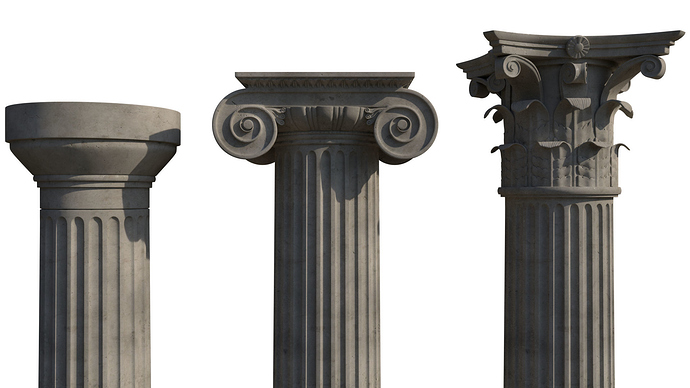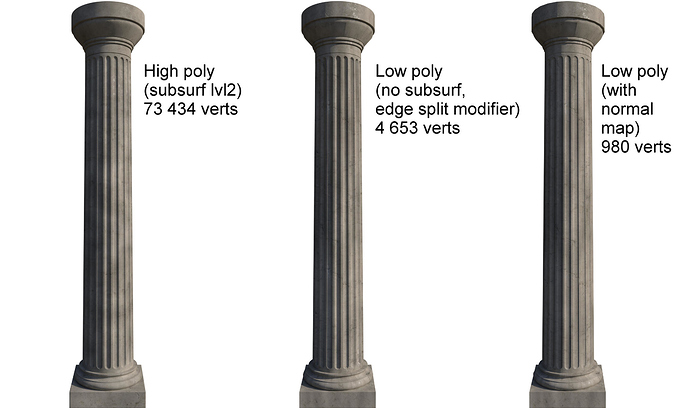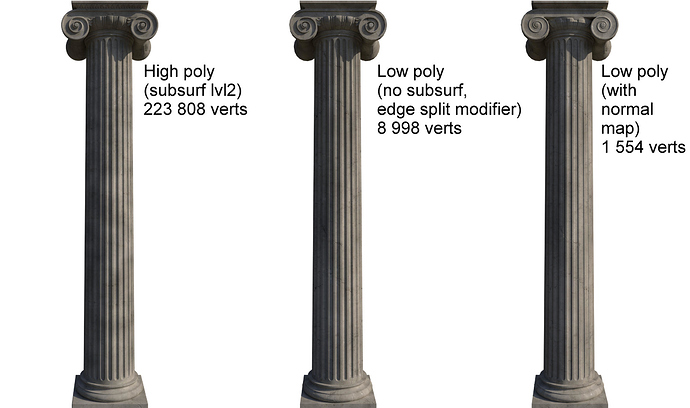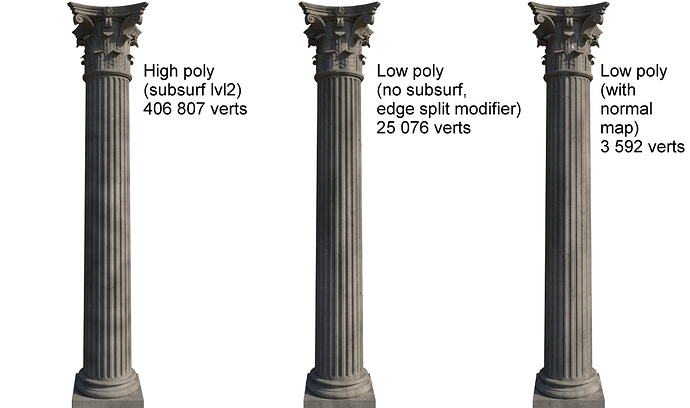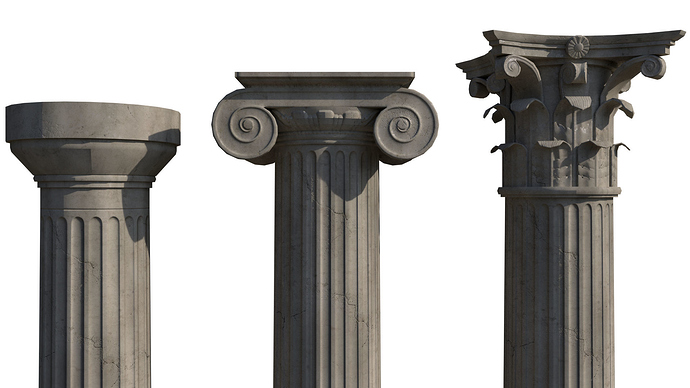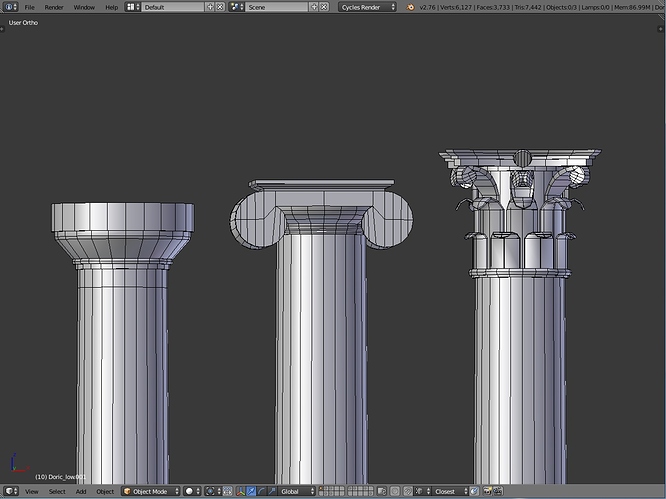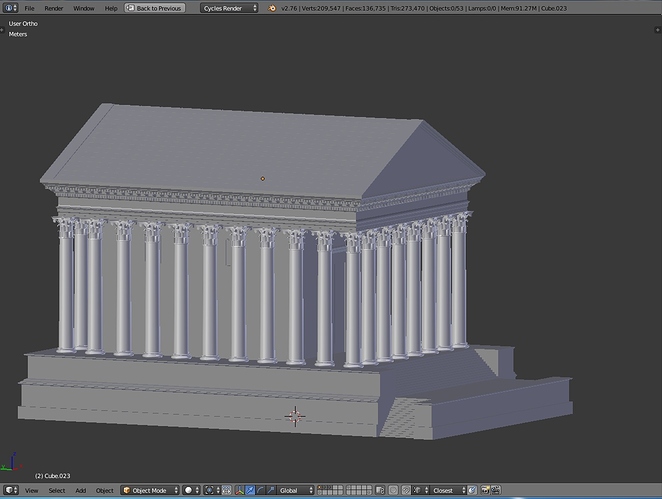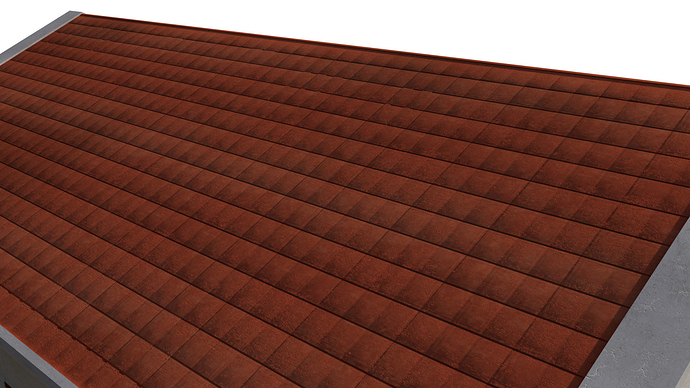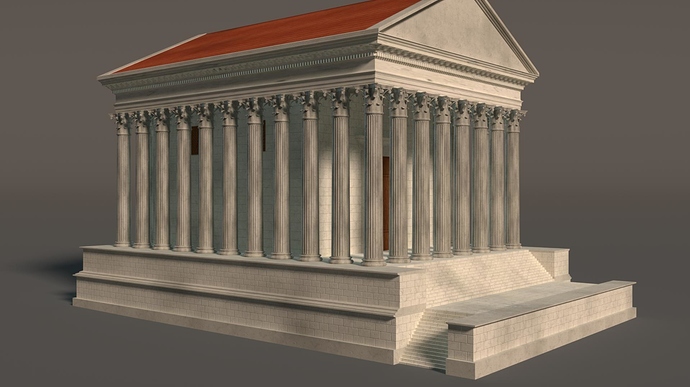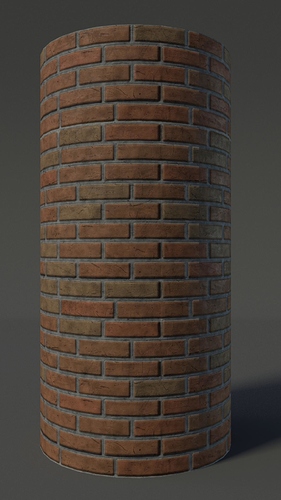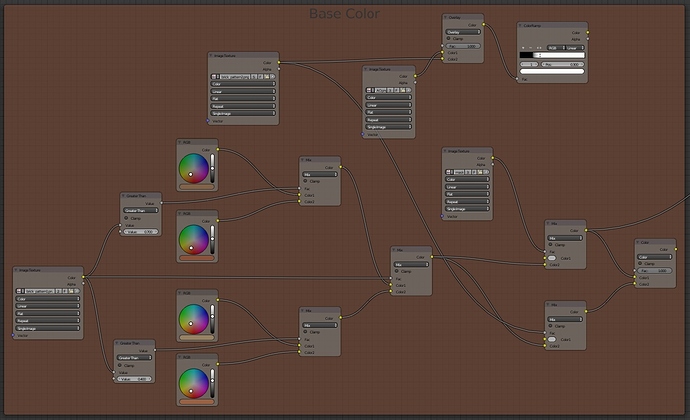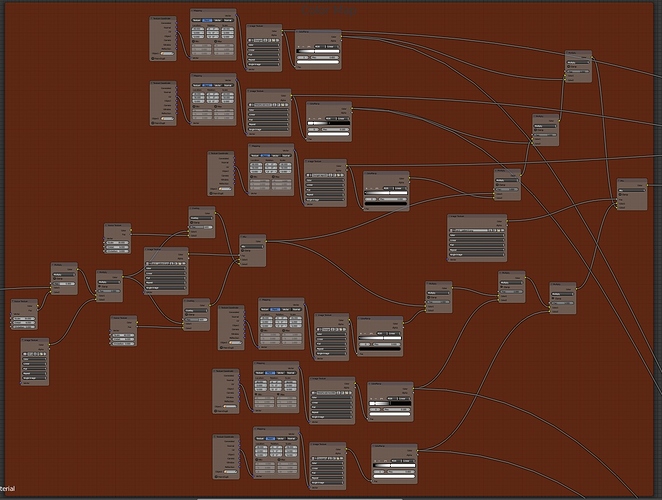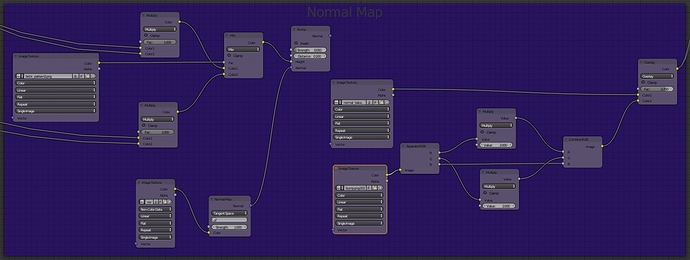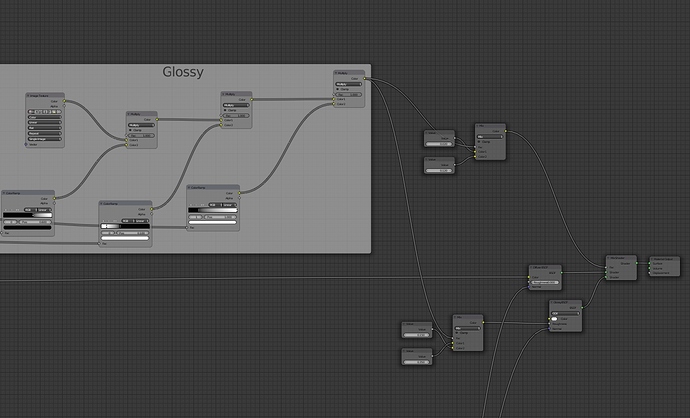Hi all! After a while I’m back to modeling and learning and decided to start with roman buildings from scratch.
I’m starting with 3 types of roman columns. Tried different techniques and here are results:
Doric column
Ionic column
Corinthian column
So, what is your opinion. I think I should use 3rd version of each column becouse of low verticies number, considering that most buildings will have 20+ columns. It is not best solution for close up renders, but should look fine when whole building is included. 1st high poly version could maybe be used for closer shots, and not sure about 2nd version. I think it is not very useful.
And here are some close up renders on capitals, both high poly and low poly. I think that biggest issue with low poly versions are sharp shadows and bad looking small details on Ionic column. Not sure if I should try some corrections or work with this one.
Really like the design of the column in the 3rd render. I would do just what you suggested… keep the highpoly one available for real closeups, but from this distance, I can barely tell a difference.
What I would definitely do is use a group instances for the columns especially if your talking about 20 or more columns
interesting
can you show you did the low poly version
thanks
happy bl
@harleynut97 - Thanks
@RickyBlender - Sure, here is screenshot of finished low poly meshes. Most details (like spiral scrolls and vertical grooves) are modeled on high poly meshes and baked on normal map.
Good Job!! It would be nice see a little tutorial on creating columns !!
@Medal71 Thanks, though I think I’m not that experienced to create tutorials 
Here is an screenshot of building I’m working on. It is Temple of Castor and Pollux. Although columns are relatively low poly, problem is with quantity. This particular building is including 34 corinthian columns, so it is over 120 000 verticies only on columns. Now I’m thinking if it is possible to reduce their details even more. As for the rest of the building, I’m planing to bake to normal maps most of smaller details (roof, entablatures), so that part should not be a problem.
Done some progress on texturing this building. Here is one render of low poly roof (only 6 verticies) with baked normal maps. I used one UV layout for whole buildign (except columns) and now I think it is too much, since small details baked on 4k texture are barely noticable. My question to you guys is should model like this be separated in couple different objects with different UV maps?
Finaly got time to do some work on this thread. I modeled insula, apartment building that housed most of citizens of lower class status. I still have to unwrap model and texture it, and also try modeling some high poly details for baking.
Previous building (Temple of Castor and Pollux) is not finished. I will have to rethink some different approaches on texturing before revisiting it.
Also here is some brick texture I made in blender starting from procedural brick texture. Not very realistic but I will test it on insula after unwrap.
Attachments
Brick looks fine, just needs some high frequency noise in the height/normal map.
this is looking good so far, I will be watching for the completed builds
That’s awesome but shading on the temple is a bit off.
I like the shield very much. I’ll enjoy watching this progress.
I would be interested in seeing your node setup for that brick texture. Cool stuff.
Thanks guys, I will continue with this thread as soon as I have some time.
For brick texture I first used single brick node with desired values pluged in emission shader to bake 2 images (first pure black and white to define brick pattern and second with different grey values).
Both images are corrected in gimp to be seamless and then used for 2 displacement modifiers along with a third modifier (clouds) for variation. All combined is baked as a normal map.
After that comes this node tree. I know it’s a bit chaotic becouse I’m lazy and not so good with node organization  Those unconnected nodes were used for emission baking of various images.
Those unconnected nodes were used for emission baking of various images.
Attachments
I highly recomend Pierrick’s tutorial series for creating PBR material, since most of my node tree is based on this technique:
Attachments
Thanks for the information – very helpful.
